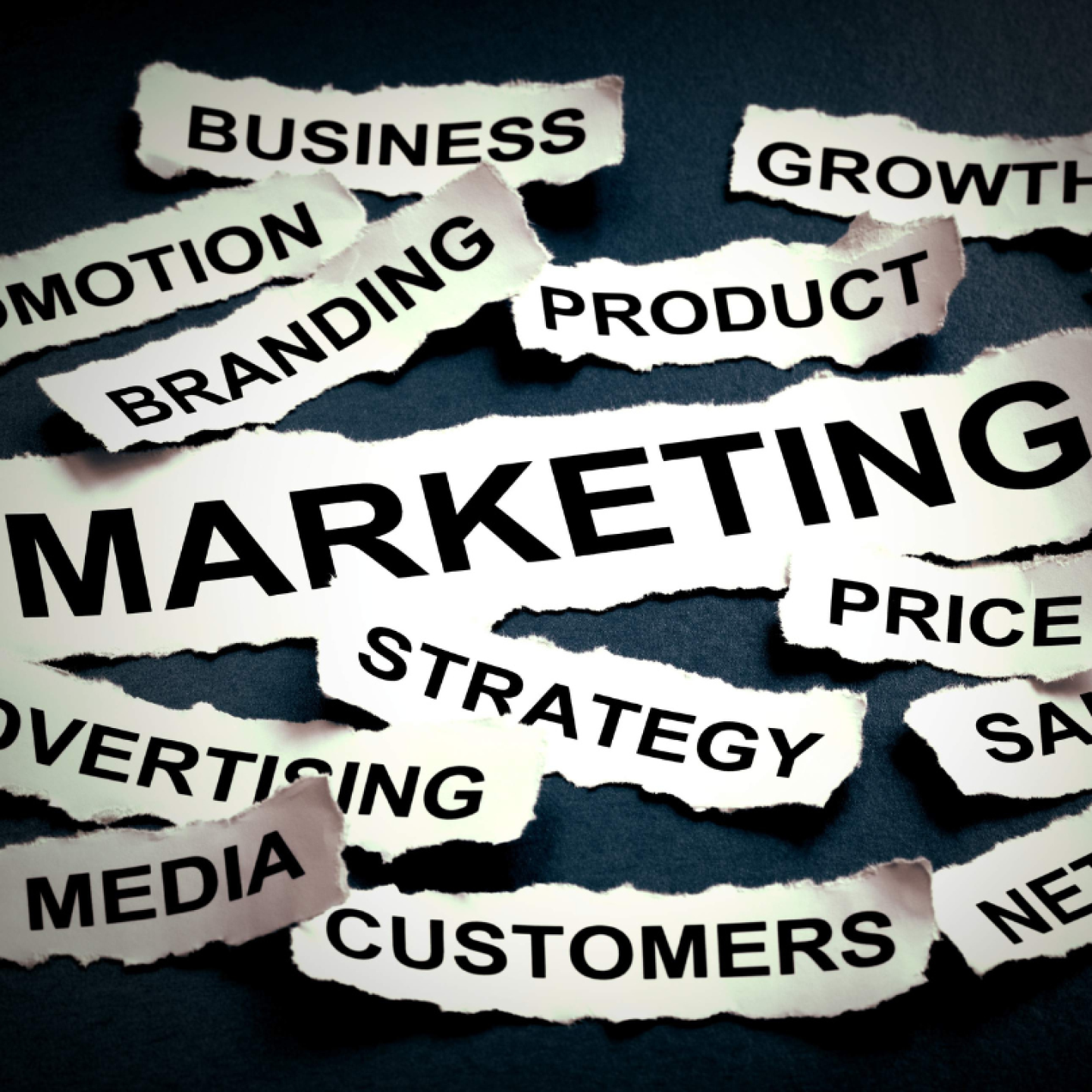
Our spy tools monitor millions of native ads from over 60+ countries and thousands of publishers.
Get StartedTattoos have gone beyond their traditional meaning and are now a significant part of modern consumer culture. We see them more than ever, with tattoos becoming a key element in marketing strategies across various industries. This cultural shift has transformed tattoos from symbols of rebellion into widely accepted forms of self-expression, influencing how brands connect with their audiences.
Using tattoos in advertising has become an innovative strategy for companies looking to attract younger consumers. These individuals often see tattoos as representations of uniqueness and genuineness—qualities that hold great appeal in today's market. Brands are increasingly tapping into this perception to build stronger relationships with their target audiences.
One important lesson from this trend is that tattoos can serve as both a marketing tool and a potential risk. On one hand, they provide an opportunity for brands to engage customers on a deeper level by aligning with their personal beliefs and goals. On the other hand, using tattoos in marketing carries inherent dangers such as misinterpretations or cultural insensitivities that could harm brand perception if not approached carefully.
To effectively incorporate tattoos into their marketing strategies, brands must understand these dynamics. This understanding will enable them to navigate the potential benefits and pitfalls associated with this bold form of expression.
Tattoos have always been a part of human history, used to represent various meanings such as tribal connections or significant life events. In the world of consumer culture, tattoos originally represented rebellion and were often associated with subcultures challenging societal norms. However, over time, these inked symbols have transformed into widely accepted expressions of individuality.
This cultural shift shows us that tattoos have grown beyond simple body art; they now serve as powerful means for storytelling and shaping one's identity. By grasping this evolution, brands can gain valuable insights into incorporating tattoo culture into their marketing strategies.
Heinz's "tattoo label" campaign is a great example of branding innovation. This initiative involved embedding tattoo stencils on the brand's product packaging, an inventive strategy that capitalizes on the cultural capital of tattoos. By aligning with tattoo culture, Heinz aimed to rejuvenate its brand image and resonate with a younger demographic known for valuing self-expression and individuality.
The campaign primarily targeted millennials and Gen Z consumers. These groups often perceive tattoos as symbols of rebellion and artistic freedom, aligning with their values of authenticity and creativity. The objective was not only to modernize Heinz's image but also to position the brand within a cultural context that celebrates uniqueness. Through this, Heinz sought to challenge perceptions that may view it as a traditional or outdated brand.
Responses to the campaign varied:
This case study illustrates how brands can leverage cultural symbols like tattoos to foster deeper connections with their audience. The balance between innovation and consumer expectations is crucial, highlighting both the opportunities and risks inherent in such marketing strategies.
Tattoos have become a unique way for brands to build brand loyalty with consumers. Unlike other forms of marketing, tattoos are permanent and offer a powerful means for individuals to show their deep commitment and love for a brand. By using tattoos as part of their marketing strategies, companies can create a strong sense of community among their brand followers, motivating them to become lifelong supporters.
Tattoos serve as a personal symbol that connects consumers with the brand on an emotional level. A tattooed logo or design acts as a constant reminder of shared values and experiences, reinforcing the consumer's sense of identity aligned with the brand.
When individuals choose to get tattoos related to their favorite brands, they often become part of an exclusive community. This community shares not only a product preference but also a lifestyle choice, strengthening collective brand loyalty.
Understanding why people choose to tattoo corporate logos can provide valuable insights into consumer-brand relationships:
Brands that understand these motivations can leverage tattoo culture to build genuine connections with their audience. This understanding can inform advertising campaigns and product designs, allowing companies to align closely with consumer values through body art. By doing so, they not only strengthen brand loyalty but also craft meaningful stories that resonate deeply with their target demographics.
Tattoos are making waves in the advertising world, marking a clear departure from traditional branding techniques. This innovative approach is catching on quickly, with brands eager to tap into the cultural significance of tattoos. By collaborating with tattoo artists and infusing tattoo-inspired designs into their products, companies are making bold statements that resonate with consumers who value individuality and self-expression.
Here are some current trends in tattoo branding:
Such strategies leverage the artistic value associated with tattoos, positioning brands as modern and edgy while appealing to younger demographics who view tattoos as a key part of their identity.
Lifestyle branding has emerged as a powerful trend, where brands go beyond selling products to promote a particular way of life. Tattoos play a crucial role in this shift:
The confluence of tattoo trends in advertising and lifestyle branding is shaping how companies interact with their audiences. As tattoos continue to gain mainstream acceptance, they present new opportunities for brands to communicate authenticity and connect emotionally with consumers.
Tattoos have evolved from being just body art to complex symbols with significant sociological meanings. Their use in marketing strategies goes beyond being a passing trend; it reflects larger cultural and societal changes.
Michel Foucault, a key figure in sociological theory, provides insights into how tattoos relate to body politics. He argued that societal norms are often imposed on bodies, determining what is deemed acceptable or rebellious. Tattoos challenge these norms by asserting individual control over one's body. For marketers, this presents an opportunity to associate brands with ideas of self-expression and uniqueness. By embracing tattoo culture, brands can position themselves as supporters of personal freedom and genuineness.
Jean Baudrillard's theory of signs and simulacra offers another way to understand tattoos in marketing. He proposed that in an oversaturated market, objects tend to lose their inherent meaning and become mere symbols or imitations. Within this framework, tattoos function as powerful symbols representing both authenticity and rebellion. In branding, tattoos can convey a message that resonates deeply with consumers seeking genuineness amidst mass-produced products. They transform into imitations carrying the significance of true personal expression, making them effective tools for brands striving to differentiate themselves.
Incorporating tattoos into marketing strategies leverages these sociological theories to forge stronger connections with consumers. Brands tapping into tattoo culture can communicate values of individuality and authenticity while challenging traditional norms. This approach not only enhances the brand story but also aligns it with current cultural discussions surrounding identity and self-expression.
Visible tattoos in sales roles have sparked diverse consumer perceptions. Research highlights how tattoos can shape the dynamics between salespeople and consumers, influencing trust and engagement levels. A study found that many consumers are more inclined to trust tattooed sales representatives compared to their non-tattooed counterparts. This phenomenon suggests that visible tattoos may project attributes of authenticity and relatability, which can enhance consumer trust.
However, biases persist based on the nature of the tattoos themselves. The type of tattoo—whether perceived as masculine or feminine—can significantly impact consumer perceptions of competence or credibility. For instance:
These gendered perceptions underscore the importance for brands to consider the nuanced role of tattoos in advertising strategies. As tattoos become more prevalent in marketing campaigns, understanding these dynamics is crucial for effectively engaging with target audiences.
The impact of tattoos extends beyond individual interactions to encompass broader implications for brand image. Incorporating tattooed individuals in advertising may resonate deeply with younger demographics, who often value self-expression through body art. Yet, brands must navigate these perceptions carefully to maintain credibility across diverse consumer bases.
In exploring tattoos' role within advertising and sales, examining both positive and negative connotations offers valuable insights into optimizing marketing strategies that embrace a culture increasingly accepting of body art.
As tattoos become more ingrained in modern culture, their role in advertising strategies is changing. Brands are starting to see the value of tattoos as a powerful tool for storytelling and connecting with their audience. This shift mirrors the broader social history of tattoos, where they have moved from being fringe elements to being widely accepted.
As societal norms evolve, tattoos are no longer seen just as symbols of rebellion, but as expressions of individuality and identity. This change presents an opportunity for brands to use tattoos to create genuine connections with consumers who value self-expression.
With the rise of augmented reality (AR) and virtual reality (VR), brands can incorporate tattoos into more immersive experiences. Imagine AR applications that allow consumers to see how a tattoo would look on their skin or VR experiences that let them explore tattoo-inspired brand stories.
While tattoos may be widely accepted in some cultures, they still face resistance in others. Brands need to be mindful of these cultural differences and understand how visible tattoos might impact consumer perceptions in different regions.
The meaning and acceptance of certain tattoo designs can vary greatly among cultures. What resonates positively in one market might have negative connotations in another. Brands must conduct thorough research to ensure that their use of tattoo symbolism aligns with local attitudes.
These evolving strategies emphasize the importance of understanding both the historical context and current views on tattoos. Brands that successfully incorporate tattoos into their marketing will likely find themselves more in tune with consumer values and aspirations, navigating a landscape that's as vibrant and diverse as tattoo culture itself.
Tattoos in advertising have become more than just design elements; they tell a story of self-expression and identity. Brands are starting to see the power of tattoos to connect with consumers on a deeper level, aligning with their values and dreams.
Summary of Key Insights:
Integrating tattoos into marketing strategies requires a nuanced approach that goes beyond looks. Brands need to understand the cultural meaning behind tattoos and carefully include them in campaigns that reflect consumers' identities. This way, they not only grab attention but also create lasting connections that resonate personally. The goal is to develop marketing strategies that speak directly to consumer values in a constantly changing marketplace.
Receive top converting landing pages in your inbox every week from us.
How-To
Native ads can do more than drive clicks—they can build long-term brand loyalty. Learn how to use authentic storytelling, strategic placement, and audience targeting to strengthen trust during year-end campaigns. Discover how subtle, value-driven messaging keeps customers engaged beyond the holidays. Ideal for marketers aiming to turn seasonal buyers into loyal brand advocates.
Marcus Chen
7 minDec 15, 2025
Must Read
As third-party cookies fade away, contextual targeting is making a powerful comeback. Learn how to leverage native ads that align with user intent and content relevance to maintain high engagement and conversions. Discover modern tools and tactics that make cookie-free targeting both precise and scalable. Ideal for advertisers seeking privacy-friendly ways to drive performance in 2025 and beyond.
Liam O’Connor
7 minDec 9, 2025
Recently Updated
Native ads can make or break your holiday marketing success. Explore how to evaluate your recent campaigns and identify what worked—or what fell short—with native advertising. Learn key optimization tactics to boost engagement, strengthen audience trust, and increase conversions in future promotions. Ideal for marketers aiming to refine their ad strategies after the holiday rush.
Elena Morales
7 minDec 1, 2025




